Assessment of landslide susceptibility mapping based on XGBoost model: A case study of Yanshan Township
-
摘要: 滑坡易发性评价是精细化滑坡灾害风险评价的基础。为了提升滑坡易发性评价模型的精度和稳健性,以三峡库区万州区燕山乡为例,选取工程地质岩组、堆积层厚度等九个影响因子构建滑坡易发性评价指标体系,应用信息量模型定量分析滑坡发育与指标之间的关系。在此基础上,随机选取70%/30%的滑坡样本作为训练/验证数据集,应用极致梯度提升模型(extreme gradient boosting, XGBoost)开展易发性评价。随后从模型预测精度和模型稳定性两方面将其与决策树模型(decision tree, DT)和梯度提升树模型(gradient boosting decision tree, GBDT)进行对比。结果表明:研究区堆积层滑坡主要受长江水系、堆积层厚度和工程地质岩组影响。XGBoost模型具有最高的准确率(94.3%)和预测精度(97.3%)。在模型稳定性验证中,平均预测精度最高(97.3%),优于DT(91.3%)和GBDT(95.7%),模型标准差和变异系数均为0.01,低于其余两种模型。XGBoost在区域滑坡易发性评价与制图中得到了可靠的结果,为滑坡灾害空间预测提供了新的技术支撑。Abstract: Landslide susceptibility assessment forms the foundation for precise evaluation of landslide risk. To enhance the accuracy and robustness of landslide susceptibility mapping, a state-of-art machine learning algorithm named the extreme gradient boosting model (XGBoost) was introduced to this study. Yanshan Town in Wanzhou district, Three Gorges reservoir, was chosen as a case study. Nine influencing factors, including engineering geological lithology and thickness of deposit layer, were selected to construct the landslide susceptibility evaluation index system. The relationship between landslide development and these indicators is quantitatively analyzed using the information value model. Subsequently, 70% of landslide samples were randomly assigned for training, while the remaining 30% were used for validation. The XGBoost model was then employed for landslide susceptibility mapping. The output were compared with those of the decision tree model (DT) and gradient boosting decision tree (GBDT) in terms of prediction accuracy and model stability. The findings revealed that distance to the Yangtze River, soil thickness, and lithology were the primary factors influencing landslide development. The XGBoost model demonstrated the highest average prediction accuracy (97.3%) in 100 repeated trials, surpassing the DT (91.3%) and GBDT models. Moreover, the XGBoost model exhibited superior robustness with a standard deviation and coefficient of variation of 0.01, lower than the other two models. It also achieved the highest accuracy (94.3%) and prediction accuracy (97.3%) in the validation process. The proposed XGBoost model serves as a reliable assessment method and yields optimal results in regional landslide susceptibility mapping.
-
0. 引言
21世纪以来,随着国家高等教育招生规模的持续扩大,许多高校通过扩建、新建校区等方式来解决原有教育资源和发展空间不足的问题。在高校发展建设过程中,受到地层构造、降雨及动静载荷等自然与人为因素的扰动,出现不均匀地表形变现象,地表形变不仅威胁到高校基础设施安全,还为高校安全带来重大隐患。因此,研究高校地表形变的时空演化特征及其发展趋势,可为高校的校区安全评估、隐患排查、基础设施建设规划提供科学参考依据。
地表形变监测常用的方法有传统的大地水准测量和全球导航卫星系统(Global navigation satellite system, GNSS)[1],由于这些监测方法劳动强度大,空间分辨率低及人工成本高等问题,难以实现大范围形变监测[2]。星载合成孔径雷达干涉测量(Interferometric synthetic aperture radar, InSAR)因其高覆盖、高分辨率、高精度及全天候等特点[3-4],已被广泛应用于地表形变监测[5]、地震形变监测[6]、滑坡早期识别[7]等地灾监测领域。合成孔径雷达差分干涉技术(Differential interferometric synthetic aperture radar, D-InDAR)通过引入外部DEM或三轨/四轨差分来获取地表形变信息[8],此技术在长时间跨度形变监测上存在局限性。为克服此局限性,提出了具有高精度、高空间密度、长时间尺度特点的时序InSAR技术(Time series InSAR, TSInSAR)。如Berardino等提出的小基线集技术(Small baseline subsets InSAR, SBAS-InSAR)[9],Ferretti等提出的永久散射体技术(Persistent scatterer InSAR, PS-InSAR)[10]及其相关的演变技术。2019年赵富萌等[11]采用SBAS-InSAR技术成功获取了中巴公路盖孜河谷段2016—2017年的地表形变信息。2020年潘建平等[12]设计了一种改进的SBAS-InSAR技术进行地表形变监测,取得了较好的成果。张红峰[13]等基于PS-InSAR技术提出基于分时散射体提取的改进算法,得到了非城区监测区的地表形变。时序InSAR技术能较好的克服时空失相干现象,减弱大气效应及地形相位的影响,能获取地表缓慢的形变信息[14-15]。
目前针对高校区域形变研究多使用GNSS或单一时序InSAR技术提取,少有学者利用覆盖同一区域的雷达影像结合不同时序InSAR 技术来获取高校的形变分布特征,且从多方面详细分析高校地表形变成因。本文利用SBAS-InSAR和PS-InSAR对覆盖研究区的2017年6月至2020年11的52景升轨Sentinel-1A影像分别进行处理,获取两种时序InSAR反演的形变速率及时序形变量。结合不同的时序InSAR进行地表形变监测,可交叉验证监测结果并增加可选性[15]。选用合适的形变结果,从自然、人为因素两方面对研究区地表形变成因分析。以期为高校校区规划建设、地灾防控、建筑设施安全提供参考资料,为其形变监测提供借鉴。
1. 研究区概况
西南科技大学位于四川省绵阳市(中国科技城),是四川省人民政府、国防科技工业局与教育部共建高校。现有青义校区、西山校区和城南校区三个校区,研究区位于绵阳市涪城区青义校区(校本部)。
西南科技大学青义校区东西长2000 m,南北宽1500 m,占地 272000 m2,校舍建筑面积1150000 m2,整个校区西高东低,地形原始地面坡度10°~30°,其地理位置以及卫星遥感图像见图1。校区处于山丘缓坡地带,属浅丘斜坡地貌,区域内有地质界线通过,以灰黄和紫红色粉质黏土、砂质泥岩、细砂岩及粉质黏土夹砂质泥岩碎块为主。研究区气候温和,雨量充沛,年降雨量达 963.2 mm,降雨具有短时强降雨量大、连续数日强降雨量大和降雨时间集中等特点[16]。
2. 数据和方法
2.1 数据源
Sentinel-1A卫星是欧洲航天局“哥白尼计划”所研制的地球观测卫星,搭载C波段合成孔径雷达天线,可全天候获取连续数据,研究过程选取Sentinel-1A作为数据源。选取时间范围从2017-06-07—2020-11-06共52景升轨Sentinel-1A影像数据进行分析,时间间隔控制在两个重访周期以内,并选取多期历史Google Earth影像对校区内新建学生公寓楼工程时空演化过程进行分析。为校正Sentinel-1A数据的轨道误差,导入精密轨道数据(Precise orbit ephemerides, POD);采用分辨率为30 m的(Shuttle radar topography mission, SRTM)DEM数据去除地形相位。同时为探讨降雨与研究区地表形变的相关性,收集了来自中国气象数据网(http://data.cma.cn/)2017—2020年共4年的绵阳站逐日降雨资料。研究数据详细参数见表1。
表 1 实验数据参数Table 1. Parameters of the experimental data数据名称 参数 值 Sentinel-1A 极化方式 VV 轨道方向 升轨 分辨率/m2 5 入射角/(°) 39 重访周期/d 12 雷达波长/cm 5.63 幅宽/km 250 时间间隔 2017-06-07—2020-11-06 SRTM 空间分辨率/m 30 中国气象数据网 气象站 56196 2.2 时间序列InSAR
常用的时序InSAR分析方法主要有三类,分别为SBAS-InSAR、PS-InSAR和混合时序InSAR[17]。选取SBAS-InSAR和PS-InSAR进行相互验证,并对比两种方法所得结果的稳健性,以此获得更加准确可靠的形变信息。为分析同种数据采用不同时序InSAR所得结果的可靠性,选取时间是2019-08-08的影像作为同一主影像。设置最大时间基线为240 d,最大空间基线占总基线45%的配置,进行影像配准得到基线图如图2。
干涉步骤中的相干性阈值设为0.35,以避免干涉图质量较差。两种时序InSAR基本参数设置保持相同,主要处理步骤都包括连接图生成、差分干涉处理、轨道精炼、反演估算及地理编码。SBAS-InSAR的差分干涉处理主要是相干性生成、去平、3D解缠和相位编辑,将所有图像配准到超级主影像为轨道精炼和反演估算做数据准备。PS-InSAR的差分干涉处理主要包括配准、干涉图生成、去平及振幅离差指数计算,其中振幅离差指数(D)的计算公式为:
(1) 式中:
在干涉处理中,干涉图中任意像素点的对应干涉相位都由多个相位分量组成:
(2) 式中:
时序InSAR可通过卫星轨道数据和外部DEM数据模拟得到椭球体、地形相位进行差分干涉,再经多次回归分析逐步移除其他相位成分,提取出形变信息。SBAS-InSAR和PS-InSAR的区别在于,SBAS-InSAR是将SAR影像根据空间基线大小分成若干个子集。通过最小二乘法获取单个子集的地表形变时间序列,再使用奇异值分解法(Singular value decomposition, SVD)将每个子集联合求解,从而得到完整监测时段内的地表形变时间序列[18]。PS-InSAR是利用覆盖同一区域的多景SAR影像,通过分析所有影像的幅度和相位信息,选取其中稳定性强,不易受时间失相干和空间失相干影响的点来作为永久散射体。以PS点作为分析目标进行建模,计算出每个PS点的形变信息,从而反演出整个监测区域的地表形变时间序列[19],数据处理基本流程见图3。
3. 地表形变监测结果及评定
3.1 地表形变的分布
利用SBAS-InSAR和PS-InSAR对2017-06-07—2020-11-06期间获取的覆盖研究区的升轨Sentinel-1A影像数据进行处理,得到研究区的形变特征如图4。时序InSAR默认为雷达视线方向(Line of sight, LOS)的形变量,将LOS向形变速率除以入射角的余弦值可将形变转换为垂直方向[20],以便于后续分析。图中负值代表地表位移方向为远离卫星(即地表沉降),正值代表地表位移方向为靠近卫星(即地表抬升)。由图4知,研究区及周围地区存在明显的地表沉降,最大的沉降形变速率达15 mm/a。在两种监测结果中,大部分区域的形变趋势保持一致,主要形变区域位于研究区西北方和东南方。部分区域两种时序InSAR的监测结果存在明显差别,如图中区域A和区域B。在图4(a)中区域A和区域B形变特征明显,图4(b)中则缺失信息。主要原因是监测时间段内两区域存在工程建设地形地貌发生改变,使PS-InSAR缺乏作为永久散射体的高相干性点,造成了失相干。单从整体的形变空间分布上看,PS-InSAR技术形变细节特征明显,SBAS-InSAR监测结果连续性更好。为进一步判断两种技术的优劣,获取两种技术的统计直方图(图5)进行分析。
由图5可得,两种时序InSAR的统计直方图都呈正态分布,监测结果形变速率范围在0 mm左右的矢量点数目居多,监测期间内大部分区域保持稳定状态。对比SBAS-InSAR与PS-InSAR的统计直方图,前者监测结果的矢量点数目较多,后者形变速率的分布更为离散。结合图4可看出SBAS-InSAR监测结果的形变区域更明显,形变速率的分布更为集中,更直观的反映出区域地表形变特征。综上以SBAS-InSAR的监测结果为研究对象,将PS-InSAR的监测结果作为补充验证,对研究区的形变特征进行分析。由于时序InSAR的监测结果质量受到相干性、粗差和地形等因素的共同影响,为检验监测结果的可靠性,从时序InSAR的相干性、形变速率精度、方差及标准差等方面进行验证。干涉处理时,PS-InSAR的相干性图会进行拉伸变形,难以进行准确分析,所以PS-InSAR选用形变速率精度检验结果可靠性,SBAS-InSAR则用相干性的高低检验数据可信度。
3.2 相干性及速率精度检验
在时序InSAR中,相干性的好坏决定干涉像对的稳定程度,相干性过低易发生时空失相干,难以提取出地表形变信息。为直观反映SBAS-InSAR的相干性高低,选取在监测时间范围内时间间隔接近的相干性图进行分析,如图6所示。图中颜色越浅区域,相干性系数值越大(值的范围为0~1),相干性越好,干涉像对则更稳定。由图可知,在时间间隔接近情况下,5—9月的相干性整体低于10月至次年3月的相干性。主要原因是10月至次年3月是属于植被非生长期,而相干性系数和植被生长周期呈负相关,植被生长越茂盛时期,相干性系数越低。且相干性系数也与时间基线呈负相关,在同一区域,时间基线越长,相干性系数越低,像对趋于失相干。故本文时序InSAR处理中,时间基线选取控制在一月以内,避免发生失相干。研究表明相干性良好,研究区的相干性皆在0.5以上,像对良好的相干性,为提取到高质量的形变信息提供了保障。
对PS-InSAR监测结果的可靠性,可通过形变速率精度来评定。提取出的形变速率精度值求出平均值为0.524,且方差和标准差分别为0.015和0.126,数据离散程度较小,可知PS-InSAR的形变速率精度基本稳定分布在0.5左右,证明PS-InSAR具有较高的形变速率精度,监测结果可靠性较好。但只考虑时序InSAR的相干性高低和形变速率精度不能完整的证明形变监测结果的稳健性和可信度。为进一步验证时序InSAR的形变监测结果,以下对比两种时序InSAR的时序沉降量,并结合方差和标准差分析评定。
3.3 结果对比与检验
为验证SBAS-InSAR技术获取地表形变量的精度,收集了在2018-01-02—2020-08-15期间研究区内6个水准点的监测数据,得到水准监测点在监测期间的形变量如图7。对比水准监测结果与SBAS-InSAR结果可知,水准监测的地表形变量与SBAS-InSAR获取的地表形变量误差较小,SBAS-InSAR获取的数据与水准监测结果最大误差为4.3 mm且两者获取的形变变化趋势相近。结果表明SBAS-InSAR方法与水准监测结果一致性较好。
选取研究区范围内二者形变特征完整且较为显著的区域,提取出时序形变量见图8。在 (Statistical product service solutions) SPSS软件中使用斯皮尔曼相关性分析法计算四个区域两种时序InSAR时序形变量的相关性大小,得到两种时序InSAR的时序形变量相关性在区域1为0.590,区域2为0.773,区域3为0.728,区域4为0.584。综上,两种时序InSAR的时序形变量相关性较强,提取的时序形变量整体上趋于一致,且形变都表现为不同程度的沉降。存在略微差异,这是其不同的散射体方式导致的,整体上两种方法具有较好的一致性,间接验证了时序InSAR的可靠性。
方差和标准差能较好的反应数据的稳定性及离散程度,由表2可知,两种InSAR监测结果的方差和标准差都较小,监测结果的整体偏离度低,稳定性较好。SBAS-InSAR监测结果的相干性系数均值和矢量点个数均大于PS-InSAR ,相干性系数越高,像对的相干性越好,后续反演地形形变精度也更高,矢量点个数越多,提取出的形变信息越多。且SBAS-InSAR监测结果的方差和标准差也小于PS-InSAR,表明SBAS-InSAR的监测结果相比PS-InSAR,稳健性更好,数据整体质量更高。因此为了更全面和准确的分析研究区形变原因,选择形变空间分布更显著和均衡的SBAS-InSAR监测结果做后续进一步的研究讨论。
表 2 形变矢量结果统计Table 2. Statistics of deformation vector results时序InSAR 矢量
点数/个平均速率
/(mm·a−1)相干性
系数均值方差 标准差 SBAS-InSAR 18011 0.721 0.608 1.358 1.165 PS-InSAR 12144 0.441 0.583 1.395 1.181 3.4 研究区的形变特征
地表沉降变形是一个长期缓慢的过程,为揭示监测期间地表的形变演化特征,利用SBAS-InSAR数据得到研究区的地表形变演化过程如图9。可以看出研究区及周围多处区域存在显著的形变,主要形变区域在研究区的西北方,且西南方和东方也存在不同程度的形变。2017—2020年间地表形变不断累积,2017年6月—2019年1月研究区及周围大部分区域处于稳定状态,2020年初形变区域显著扩大,至2020年11月6日形变量最大达45 mm。
4. 形变成因探讨
4.1 降雨量
连续数日强降雨和短时强降雨是影响地质灾害发育的重要因素之一,强降雨汇聚的大量积水通过入渗地表软化岩土,增大岩土自重且降低岩土抗剪强度,促进了地面形变的发生。为探究降雨对研究区地表形变的影响,对研究区2017—2020年共四年的逐日降雨数据进行移动平均处理,得到降雨量时间序列的变化趋势如图10。再获取图4(a)中区域2、区域3和区域4的时序沉降量如图11,用以分析降雨变化趋势和时序形变量特征。对比降雨的移动平均曲线和时序形变量曲线可知,三个区域的地表形变特征和降雨变化规律整体上呈显著相关。2017年,6—8月降雨量骤增,同年10月至次年1月此间地面沉降显著,2月到6月期间降雨减少,地面发生明显抬升。2018年地表形变规律基本与2017年一致,2019年降雨量相对较少,此时间段地表形变变化不显著。2020年,6—8月降雨增加后,地表形变呈沉降趋势。究其原因是夏季降雨量骤增,汇聚的大量降水入渗地表,软化及饱和岩土,在增加岩土的自重同时降低了结构面的强度,加之人为活动与地表建筑的荷载,发生沉降现象;冬春季节降雨锐减,气温降低,岩土冻胀作用使地面抬升。且降雨导致的地表沉降和降雨规律不完全同步,是因降雨引起的地面形变一般存在滞后现象。绵阳地区冬春季节气温下降幅度较小,强降雨对地面形变的影响大于温度变化,使三个区域地表形变整体上呈现沉降趋势。综上,降雨是西南科技大学校本部地表形变产生的重要因素之一。
4.2 建筑施工
中高层建筑施工是改变地形地貌的主要因素之一,地面沉降的演化过程会受建设施工的空间演化影响。图4中区域A和区域B在时序InSAR形变监测期间皆有中高层建筑施工影响,两区域施工建设的空间演化过程较为一致,以其中一个区域为例进行详细分析。选取覆盖研究区内区域A的历史多期光学影像对建设施工区域进行解译,得到区域A的施工建设演化过程如图12。区域A是西南科技大学学生公寓楼扩建范围, 2017年9月—2018年5月期间进行工程前期准备尚未开始地基建设,结合图8地表形变演化特征可知此时间段内地表形变的范围和幅度变化较小。2018年5月—2019年1月为土方开挖进行地基建设,期间地表形变幅度及范围缓慢增大。2019年末建筑主体已全部完工,而2020年2月—2020年11月期间地表形变范围和幅度显著增大。主要原因是地基阶段基坑土体开挖使应力释放[21],导致基坑周围土体发生位移并伴随不均匀沉降,学生公寓楼主体完工后,地面荷载骤增加之建筑主体位于斜坡面上导致形变程度进一步加大。区域B在2019年末开始施工,从地表形变演化特征(图9)可知其建筑施工前地表形变幅度和范围变化不显著。此外为从量级和时序上分析形变特点,获取区域A和区域B中心点的时序沉降规律进行说明。
由图13可知,区域A整体上呈沉降趋势,在2018年5月前地表沉降幅度较小;2018年5月—2019年11月地表沉降幅度缓慢增大;2020年期间地表沉降幅度明显增大,下沉速度加快。区域B整体沉降趋势较缓,2020年1月后沉降速度略微增加,两区域时序形变规律与地表形变演化过程较为一致。综上所述,中高层建筑施工会引起研究区内一定幅度的地表形变,在对形变的发生造成影响的同时还会使形变的程度加剧。
4.3 地层岩性、地层界线及地势地貌
地表形变的发生是综合因素导致的,其中地势地貌、岩性及地层界线是产生地表形变现象的关键扰动因素。由图14可得,西南科技大学青义校区中部穿过了一条地层界线,观察发现地质界线上地表形变幅度较小且分布较少,与研究区的地表形变不显著相关。结合图15分析岩性可知,在由粉质黏土、粉土、砾石及砂黏物质为主的中更新统四级阶地冲洪积层上,地表沉降范围和幅度都较大。而在主要由砾石及砂黏物质构成的全新统冲洪积层上,除去区域B(图4)是因工程建设引起的地表沉降外,只有个别区域存在明显地表沉降。土层厚度和岩性的不均一性及地层的含水量和空隙率,是导致地表形变在空间上不均匀分布的主要原因。中更新统四级阶地冲洪积层中的粉土、粉质黏土及多层砾石等结构可压缩性较高,且校园生活用水主要为地下水,长期抽取地下水导致含水层上覆土层空隙水空隙水压力减小,破坏了岩土力学平衡,从而发生地表沉降[22]。全新统冲洪积层简单的地层构造加之区域内地下用水较少,因此区域内地表沉降现象不显著。上述表明岩性及其构成与地表形变呈显著相关,且不同的土层厚度和岩性引起的地表形变量级不同。再者研究区处于山丘缓坡地带,整体地势西高东低,由于降雨、建筑施工等原因改变了边坡原有的稳定性,斜坡的局部稳定性受破坏倾向于不稳定斜坡发展,进而促使了地表形变的发生。
5. 结论
本文利用时序InSAR技术对覆盖西南科技大学青义校区的52景升轨Sentinel-1A影像进行了处理,获取了西南科技大学青义校区2017年6月7日—2020年10月11日的地表形变信息,对地表形变时空演化规律和诱发因素进行了详细分析,得到以下结论:
(1)西南科技大学青义校区及周围区域在2017年6月—2020年10月存在多处显著沉降,主要沉降区域在西南科技大学青义校区的西北方,其中最大垂直沉降速率可达15 mm/a。
(2)时序InSAR相干性及速率精度检验显示,两种时序InSAR技术获得的形变信息可靠性较高,总体结果一致性较好。SBAS-InSAR监测结果的方差和标准差皆小于PS-InSAR,SBAS-InSAR的监测结果稳健性更好,数据整体质量较高。
(3)西南科技大学青义校区的地表形变与学生公寓楼、道路扩建等人为因素有关,自然因素中,地表沉降区与强降雨、岩性及地势地貌关联紧密,地层界线与地表形变不显著相关。
-
表 1 各因素状态信息量表
Table 1 The weighted information values of each factor state
指标 分级 信息量 指标 分级 信息量 指标 分级 信息量 坡度/(°) 0~9 1.28 工程地质岩组 砂岩夹泥岩、砂岩 1.58 斜坡结构 顺向伏倾坡、顺向飘倾坡 0.75 9~21 0.75 砂泥岩互层 0.59 顺斜坡 −0.99 21~33 −0.83 泥岩夹砂岩、泥岩 1.46 横向坡、逆斜坡、逆向坡 −0.96 33~45 −3.28 页岩夹灰岩、灰岩 −1.79 斜坡形态 内向凸形坡 0.31 >45 −9.32 距长江距离/m 0-400 2.96 直线凸形坡、外向凸形坡 −0.21 植被归一化指数 <0.15 1.07 400~700 −0.46 内向直坡、直线直坡 −1.79 0.15~0.25 −0.30 700~1400 0.72 外向直坡、内向凹坡 −0.82 >0.25 −0.70 >1400 −1.84 直线凹坡、外向凹坡 −0.99 坡向/(°) 0~180 −1.33 地形湿度指数 0~6 −0.35 堆积层厚度/m 0~0.8 −9.98 180~234 0.01 6~12 0.83 0.8~1.6 −3.35 234~252 −0.13 12~18 0.23 1.6~2.4 −1.04 252~342 0.58 >18 −1.24 >2.4 2.54 342~360 −0.60 表 2 标准差和变异系数
Table 2 Standard deviation and coefficient of variation
模型 平均数 标准差 变异系数 95%置信区间下限 95%置信区间上限 DT 90.304 0.734 0.813 90.160 90.448 GBDT 95.612 0.062 0.065 95.600 95.624 XGBoost 97.281 0.010 0.010 97.279 97.283 -
[1] 武雪玲,沈少青,牛瑞卿. GIS支持下应用PSO-SVM模型预测滑坡易发性[J]. 武汉大学学报(信息科学版),2016,41(5):665 − 671. [WU Xueling,SHEN Shaoqing,NIU Ruiqing. Landslide susceptibility prediction using GIS and PSO-SVM[J]. Geomatics and Information Science of Wuhan University,2016,41(5):665 − 671. (in Chinese with English abstract) WU Xueling, SHEN Shaoqing, NIU Ruiqing. Landslide susceptibility prediction using GIS and PSO-SVM[J]. Geomatics and Information Science of Wuhan University, 2016, 41(5)665-671(in Chinese with English abstract)
[2] 殷跃平,张晨阳,闫慧,等. 三峡水库蓄水运行滑坡渗流稳定和防治设计研究[J]. 岩石力学与工程学报,2022,41(4):649 − 659. [YIN Yueping, ZHANG Chenyang, YAN Hui, et al. Research on seepage stability and prevention design of landslides during impoundment operation of the Three Gorges Reservoir, China[J]. Chinese Journal of Rock Mechanics and Engineering,2022,41(4):649 − 659. (in Chinese with English abstract) Yin Yueping, Zhang Chenyang, Yan Hui, et al. Research on seepage stability and prevention design of landslides during impoundment operation of the Three Gorges Reservoir, China[J]. Chinese Journal of Rock Mechanics and Engineering, 2022, 41(4): 649-659.(in Chinese with English abstract)
[3] 杨何,汤明高,许强,等. 长江三峡库区滑坡变形统计特征研究[J]. 灾害学,2021,36(2):37 − 42. [YANG He,TANG Minggao,XU Qiang,et al. Research of statistical characteristics of deformation of landslides in the Three Gorges Reservoir area of the Yangtze River[J]. Journal of Catastrophology,2021,36(2):37 − 42. (in Chinese with English abstract) YANG He, TANG Minggao, XU Qiang, et al. Research of statistical characteristics of deformation of landslides in the Three Gorges Reservoir area of the Yangtze River[J]. Journal of Catastrophology, 2021, 36(2)37-42(in Chinese with English abstract)
[4] 朱宇航,黄海峰,殷坤龙,等. 基于滑坡破坏模式分析的易发性评价—以三峡库区首段泄滩河左岸为例[J]. 中国地质灾害与防治学报,2023,34(2):156 − 166. [ZHU Yuhang, HUANG Haifeng, YIN Kunlong, et al. Evaluation of landslide susceptibility based on landslide failure mode analysis: A case study of the left bank of Xietan River in the first section of Three Gorges Reservoir[J]. The Chinese Journal of Geological Hazard and Control,2023,34(2):156 − 166. (in Chinese with English abstract) [ZHU Yuhang, HUANG Haifeng, YIN Kunlong, et al. Evaluation of landslide susceptibility based on landslide failure mode analysis: a case study of the left bank of Xietan River in the first section of Three Gorges Reservoir[J]. The Chinese Journal of Geological Hazard and Control, 2023, 34(2)156-166(in Chinese with English abstract)
[5] 许嘉慧,张虹,文海家,等. 基于逻辑回归的巫山县滑坡易发性区划研究[J]. 重庆师范大学学报(自然科学版),2021,38(2):48 − 56. [XU Jiahui,ZHANG Hong,WEN Haijia,et al. Landslide susceptibility mapping based on logistic regression in Wushan County[J]. Journal of Chongqing Normal University (Natural Science),2021,38(2):48 − 56. (in Chinese with English abstract) Xu Jiahui, Zhang Hong, Wen Haijia, et al. Landslide susceptibility mapping based on logistic regression in Wushan County[J]. Journal of Chongqing Normal University (Natural Science), 2021, 38(2): 48-56. (in Chinese with English abstract)
[6] 陈丽霞, 徐勇, 李德营. 武陵山区城镇地质灾害风险评估技术指南及案例分析[M]. 武汉: 中国地质大学出版社, 2019 CHEN Lixia, XU Yong, LI Deying. Guidelines and applications for geohazard risk assessment of urban areas in Wuling Mountain region[M]. Wuhan: China University of Geosciences Press, 2019. (in Chinese)
[7] BAI Shibiao,WANG Jian,LÜ Guonian,et al. GIS-based logistic regression for landslide susceptibility mapping of the Zhongxian segment in the Three Gorges area,China[J]. Geomorphology,2010,115(1/2):23 − 31.
[8] LONG Jingjing,LIU Yong,LI Changdong,et al. A novel model for regional susceptibility mapping of rainfall-reservoir induced landslides in Jurassic slide-prone strata of western Hubei Province,Three Gorges Reservoir area[J]. Stochastic Environmental Research and Risk Assessment,2021,35(7):1403 − 1426. DOI: 10.1007/s00477-020-01892-z
[9] 周超,殷坤龙,曹颖,等. 基于集成学习与径向基神经网络耦合模型的三峡库区滑坡易发性评价[J]. 地球科学,2020,45(6):1865 − 1876. [ZHOU Chao,YIN Kunlong,CAO Ying,et al. Landslide susceptibility assessment by applying the coupling method of radial basis neural network and adaboost:a case study from the Three Gorges Reservoir area[J]. Earth Science,2020,45(6):1865 − 1876. (in Chinese with English abstract) ZHOU Chao, YIN Kunlong, CAO Ying, et al. Landslide susceptibility assessment by applying the coupling method of radial basis neural network and adaboost: a case study from the Three Gorges Reservoir area[J]. Earth Science, 2020, 45(6): 1865-1876. (in Chinese with English abstract)
[10] 田乃满,兰恒星,伍宇明,等. 人工神经网络和决策树模型在滑坡易发性分析中的性能对比[J]. 地球信息科学学报,2020,22(12):2304 − 2316. [TIAN Naiman,LAN Hengxing,WU Yuming,et al. Performance comparison of BP artificial neural network and CART decision tree model in landslide susceptibility prediction[J]. Journal of Geo-Information Science,2020,22(12):2304 − 2316. (in Chinese with English abstract) TIAN Naiman, LAN Hengxing, WU Yuming, et al. Performance comparison of BP artificial neural network and CART decision tree model in landslide susceptibility prediction[J]. Journal of Geo-Information Science, 2020, 22(12): 2304-2316. (in Chinese with English abstract)
[11] REGMI N R,GIARDINO J R,VITEK J D. Assessing susceptibility to landslides:using models to understand observed changes in slopes[J]. Geomorphology,2010,122(1/2):25 − 38.
[12] 王佳佳,殷坤龙,肖莉丽. 基于GIS和信息量的滑坡灾害易发性评价—以三峡库区万州区为例[J]. 岩石力学与工程学报,2014,33(4):797 − 808. [WANG Jiajia,YIN Kunlong,XIAO Lili. Landslide susceptibility assessment based on GIS and weighted information value:A case study of Wanzhou district,Three Gorges Reservoir[J]. Chinese Journal of Rock Mechanics and Engineering,2014,33(4):797 − 808. (in Chinese with English abstract) WANG Jiajia, YIN Kunlong, XIAO Lili. Landslide susceptibility assessment based on GIS and weighted information value: a case study of Wanzhou district, Three Gorges Reservoir[J]. Chinese Journal of Rock Mechanics and Engineering, 2014, 33(4): 797-808. (in Chinese with English abstract)
[13] 周超,殷坤龙,向章波,等. 基于GIS的淳安县滑坡易发性定量评价[J]. 安全与环境工程,2015,22(1):45 − 50. [ZHOU Chao,YIN Kunlong,XIANG Zhangbo,et al. Quantitative evaluation of the landslide susceptibility in Chun'an County based on GIS[J]. Safety and Environmental Engineering,2015,22(1):45 − 50. (in Chinese with English abstract) ZHOU Chao, YIN Kunlong, XIANG Zhangbo, et al. Quantitative evaluation of the landslide susceptibility in Chun'an County based on GIS[J]. Safety and Environmental Engineering, 2015, 22(1): 45-50. (in Chinese with English abstract)
[14] 张林梵,王佳运,张茂省,等. 基于BP神经网络的区域滑坡易发性评价[J]. 西北地质,2022,55(2):260 − 270. [ZHANG Linfan, WANG Jiayun, ZHANG Maosheng, et al. Evaluation of regional landslide susceptibility assessment based on BP neural network[J]. Northwestern Geology,2022,55(2):260 − 270. (in Chinese with English abstract) [ZHANG Linfan, WANG Jiayun, ZHANG Maosheng, et al. Evaluation of regional landslide susceptibility assessment based on BP neural network[J]. Northwestern Geology, 2022, 55(2): 260-270.(in Chinese with English abstract)
[15] 许冲,徐锡伟. 基于GIS与ANN模型的地震滑坡易发性区划[J]. 地质科技情报,2012,31(3):116 − 121. [XU Chong,XU Xiwei. GIS and ANN model for earthquake triggered landslides susceptibility zonation[J]. Geological Science and Technology Information,2012,31(3):116 − 121. (in Chinese with English abstract) XU Chong, XU Xiwei. GIS and ANN model for earthquake triggered landslides susceptibility zonation[J]. Geological Science and Technology Information, 2012, 31(3): 116-121. (in Chinese with English abstract)
[16] BRAGAGNOLO L,DA SILVA R V,GRZYBOWSKI J M V. Artificial neural network ensembles applied to the mapping of landslide susceptibility[J]. CATENA,2020,184:104240. DOI: 10.1016/j.catena.2019.104240
[17] 陈飞,蔡超,李小双,等. 基于信息量与神经网络模型的滑坡易发性评价[J]. 岩石力学与工程学报,2020,39(S01):2859 − 2870. [CHEN Fei,CAI Chao,LI Xiaoshuang,et al. Evaluation of landslide susceptibility based on information volume and neural network model[J]. Chinese Journal of Rock Mechanics and Engineering,2020,39(S01):2859 − 2870. (in Chinese with English abstract) CHEN Fei, CAI Chao, LI Xiaoshuang, et al. Evaluation of landslide susceptibility based on information volume and neural network model[J]. Chinese Journal of Rock Mechanics and Engineering, 2020, 39(S01): 2859-2870. (in Chinese with English abstract)
[18] YU Chenglong,CHEN Jianping. Landslide susceptibility mapping using the slope unit for southeastern Helong city,Jilin Province,China:a comparison of ANN and SVM[J]. Symmetry,2020,12(6):1047. DOI: 10.3390/sym12061047
[19] ZHAO Shuai,ZHAO Zhou. A comparative study of landslide susceptibility mapping using SVM and PSO-SVM models based on grid and slope units[J]. Mathematical Problems in Engineering,2021,2021:1 − 15.
[20] LEE S,HONG S M,JUNG H S. A support vector machine for landslide susceptibility mapping in gangwon Province,Korea[J]. Sustainability,2017,9(1):48. DOI: 10.3390/su9010048
[21] PRADHAN B. A comparative study on the predictive ability of the decision tree,support vector machine and neuro-fuzzy models in landslide susceptibility mapping using GIS[J]. Computers & Geosciences,2013,51:350 − 365.
[22] PARK S,HAMM S Y,KIM J. Performance evaluation of the GIS-based data-mining techniques decision tree,random forest,and rotation forest for landslide susceptibility modeling[J]. Sustainability,2019,11(20):5659. DOI: 10.3390/su11205659
[23] SONG Yingxu,NIU Ruiqing,XU Shiluo,et al. Landslide susceptibility mapping based on weighted gradient boosting decision tree in Wanzhou section of the Three Gorges Reservoir area (China)[J]. ISPRS International Journal of Geo-Information,2018,8(1):4. DOI: 10.3390/ijgi8010004
[24] YANG Yanguo, YU Jiaqi, FU Yubin, et al. Research on geological hazard risk assessment based on the cloud fuzzy clustering algorithm[J]. Journal of Intelligent & Fuzzy Systems,2019,37(4):4763 − 4770.
[25] SRIKANTH B,LAKSHMI V PAPINENI S,SRIDEVI G,et al. Adaptive XGBOOST hyper tuned meta classifier for prediction of churn customers[J]. Intelligent Automation & Soft Computing,2022,33(1):21 − 34.
[26] TEHRANY M S,PRADHAN B,MANSOR S,et al. Flood susceptibility assessment using GIS-based support vector machine model with different kernel types[J]. CATENA,2015,125:91 − 101. DOI: 10.1016/j.catena.2014.10.017
[27] WU Yuanyuan,WU Li,ZHU Huacheng,et al. Design of high temperature complex dielectric properties measuring system based on XGBoost algorithm[J]. Materials,2020,13(6):1419. DOI: 10.3390/ma13061419
[28] 赵建华,陈汉林,杨树锋,等. 基于决策树算法的滑坡危险性区划评价[J]. 浙江大学学报(理学版),2004,31(4):465 − 470. [ZHAO Jianhua,CHEN Hanlin,YANG Shufeng,et al. Landslide risk assessment based on decision tree arithmetic[J]. Journal of Zhejiang University (Science Edition),2004,31(4):465 − 470. (in Chinese with English abstract) Zhao Jianhua, Chen Hanlin, Yang Shufeng, et al. Landslide risk assessment based on decision tree arithmetic[J]. Journal of Zhejiang University (Science Edition), 2004, 31(4): 465-470. (in Chinese with English abstract)
[29] 蔡文学,罗永豪,张冠湘,等. 基于GBDT与Logistic回归融合的个人信贷风险评估模型及实证分析[J]. 管理现代化,2017,37(2):1 − 4. [CAI Wenxue, LUO Yonghao, ZHANG Guanxiang, et al. Personal credit risk assessment model and empirical analysis based on the fusion of GBDT and logistic regression[J]. Modernization of Management,2017,37(2):1 − 4. (in Chinese with English abstract) [Cai Wenxue, Luo Yonghao, Zhang Guanxiang, et al. Personal credit risk assessment model and empirical analysis based on the fusion of GBDT and logistic regression[J]. Modernization of Management, 2017, 37(2(in Chinese with English abstract)
[30] CHEN Tianqi, GUESTRIN C. XGBoost: a scalable tree boosting system[C]//Proceedings of the 22nd ACM SIGKDD International Conference on Knowledge Discovery and Data Mining. August 13 – 17, 2016, San Francisco, California, USA. New York: ACM, 2016: 785 – 794.
[31] ZHONG Jiancheng,SUN Yusui,PENG Wei,et al. XGBFEMF:an XGBoost-based framework for essential protein prediction[J]. IEEE Transactions on NanoBioscience,2018,17(3):243 − 250. DOI: 10.1109/TNB.2018.2842219
[32] 黄发明,殷坤龙,蒋水华,等. 基于聚类分析和支持向量机的滑坡易发性评价[J]. 岩石力学与工程学报,2018,37(1):156 − 167. [HUANG Faming,YIN Kunlong,JIANG Shuihua,et al. Landslide susceptibility assessment based on clustering analysis and support vector machine[J]. Chinese Journal of Rock Mechanics and Engineering,2018,37(1):156 − 167. (in Chinese with English abstract) Huang Faming, Yin Kunlong, Jiang Shuihua, et al. Landslide susceptibility assessment based on clustering analysis and support vector machine[J]. Chinese Journal of Rock Mechanics and Engineering, 2018, 37(1): 156-167. (in Chinese with English abstract)
[33] 张俊,殷坤龙,王佳佳,等. 三峡库区万州区滑坡灾害易发性评价研究[J]. 岩石力学与工程学报,2016,35(2):284 − 296. [ZHANG Jun,YIN Kunlong,WANG Jiajia,et al. Evaluation of landslide susceptibility for Wanzhou District of Three Gorges Reservoir[J]. Chinese Journal of Rock Mechanics and Engineering,2016,35(2):284 − 296. (in Chinese with English abstract) Zhang Jun, Yin Kunlong, Wang Jiajia, et al. Evaluation of landslide susceptibility for Wanzhou district of Three Gorges Reservoir[J]. Chinese Journal of Rock Mechanics and Engineering, 2016, 35(2): 284-296. (in Chinese with English abstract)
[34] 王芳,殷坤龙,桂蕾,等. 不同日降雨工况下万州区滑坡灾害危险性分析[J]. 地质科技情报,2018,37(1):190 − 195. [WANG Fang,YIN Kunlong,GUI Lei,et al. Landslide hazard analysis under different daily rainfall conditions in Wanzhou district[J]. Geological Science and Technology Information,2018,37(1):190 − 195. (in Chinese with English abstract) WANG Fang, YIN Kunlong, GUI Lei, et al. Landslide hazard analysis under different daily rainfall conditions in Wanzhou district[J]. Geological Science and Technology Information, 2018, 37(1): 190-195. (in Chinese with English abstract)
[35] 刘渊博,牛瑞卿,于宪煜,等. 旋转森林模型在滑坡易发性评价中的应用研究[J]. 武汉大学学报(信息科学版),2018,43(6):959 − 964. [LIU Yuanbo,NIU Ruiqing,YU Xianyu,et al. Application of the rotation forest model in landslide susceptibility assessment[J]. Geomatics and Information Science of Wuhan University,2018,43(6):959 − 964. (in Chinese with English abstract) LIU Yuanbo, NIU Ruiqing, YU Xianyu, et al. Application of the rotation forest model in landslide susceptibility assessment[J]. Geomatics and Information Science of Wuhan University, 2018, 43(6): 959-964. (in Chinese with English abstract)
[36] BASHEER I A,HAJMEER M. Artificial neural networks:fundamentals,computing,design,and application[J]. Journal of Microbiological Methods,2000,43(1):3 − 31. DOI: 10.1016/S0167-7012(00)00201-3
[37] TIAN Liwei,FENG Li,SUN Yu,et al. Forecast of LSTM-XGBoost in stock price based on Bayesian optimization[J]. Intelligent Automation & Soft Computing,2021,29(3):855 − 868.
[38] CHEN Yu,WEI Yongming,WANG Qinjun,et al. Mapping post-earthquake landslide susceptibility:A U-net like approach[J]. Remote Sensing,2020,12(17):2767. DOI: 10.3390/rs12172767
[39] ZHANG Kaixiang,WU Xueling,NIU Ruiqing,et al. The assessment of landslide susceptibility mapping using random forest and decision tree methods in the Three Gorges Reservoir area,China[J]. Environmental Earth Sciences,2017,76(11):405. DOI: 10.1007/s12665-017-6731-5
-
期刊类型引用(13)
1. 徐文正,卢书强,林振,周王敏. 联合InSAR与神经网络的范家坪滑坡形变监测及预测研究. 水文地质工程地质. 2025(02): 150-163 .  百度学术
百度学术
2. 刘鹏. 新一轮找矿突破战略行动背景下地质调查发展路径. 世界有色金属. 2024(04): 93-95 .  百度学术
百度学术
3. 刘伯元,王婷婷,陈慧玲. 刍议数字时代地勘行业参与生态文明建设路径. 世界有色金属. 2024(04): 182-184 .  百度学术
百度学术
4. 岳磊,刘昌义,丛晓明,唐彬元,付江涛,邢光延,雷浩川,赵吉美,吕伟涛,胡夏嵩. 基于InSAR技术的夏藏滩滑坡区地表变形监测与分析. 水文地质工程地质. 2024(03): 158-170 .  百度学术
百度学术
5. 王东仓,何景媛. 创新金融模式下生态保护修复路径探析. 世界有色金属. 2024(06): 147-149 .  百度学术
百度学术
6. 黄宝华,周利霞,孔祥侨. 基于PS-InSAR的建筑及道路动态沉降安全监测. 山东交通学院学报. 2024(02): 53-59 .  百度学术
百度学术
7. 刘鹏. 创新视角下的生态保护修复探讨. 世界有色金属. 2024(08): 174-176 .  百度学术
百度学术
8. 刘栋永. 地勘行业战略转型背景下科学事业单位项目成本核算探究. 世界有色金属. 2024(08): 181-183 .  百度学术
百度学术
9. 陈一超,赵文博. 基于地质调查转型发展背景下创新技术应用探讨. 世界有色金属. 2024(08): 188-191 .  百度学术
百度学术
10. 亓国涛,王荣,高晓琦. 地勘单位参与生态修复行业高质量发展的路径探析. 世界有色金属. 2024(10): 178-181 .  百度学术
百度学术
11. 王婷婷,刘伯元,孔萌. 浅析矿山生态修复治理存在问题及治理方向. 世界有色金属. 2024(14): 102-104 .  百度学术
百度学术
12. 张婉娜,高乃昌. 数据可视化背景下生态修复规划实现路径. 世界有色金属. 2024(14): 190-192 .  百度学术
百度学术
13. 马梓程,陈思,熊忠招,谢菲,孙天成,沈鹏,张思琦,田晓月,刘飞. 基于机器学习协同长时序主被动遥感数据的地质灾害易发性评价. 资源环境与工程. 2023(05): 587-598 .  百度学术
百度学术
其他类型引用(4)





 下载:
下载:
























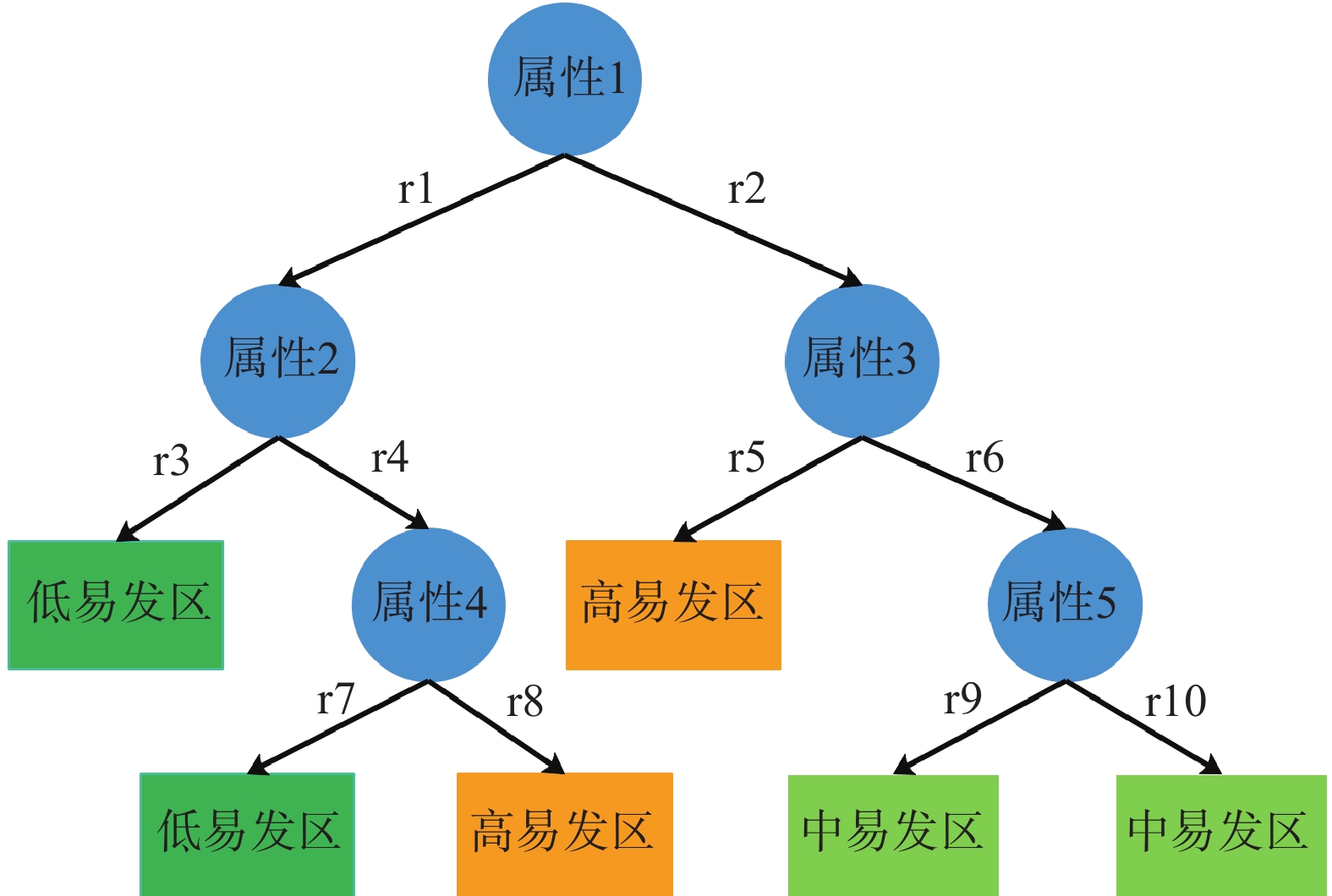
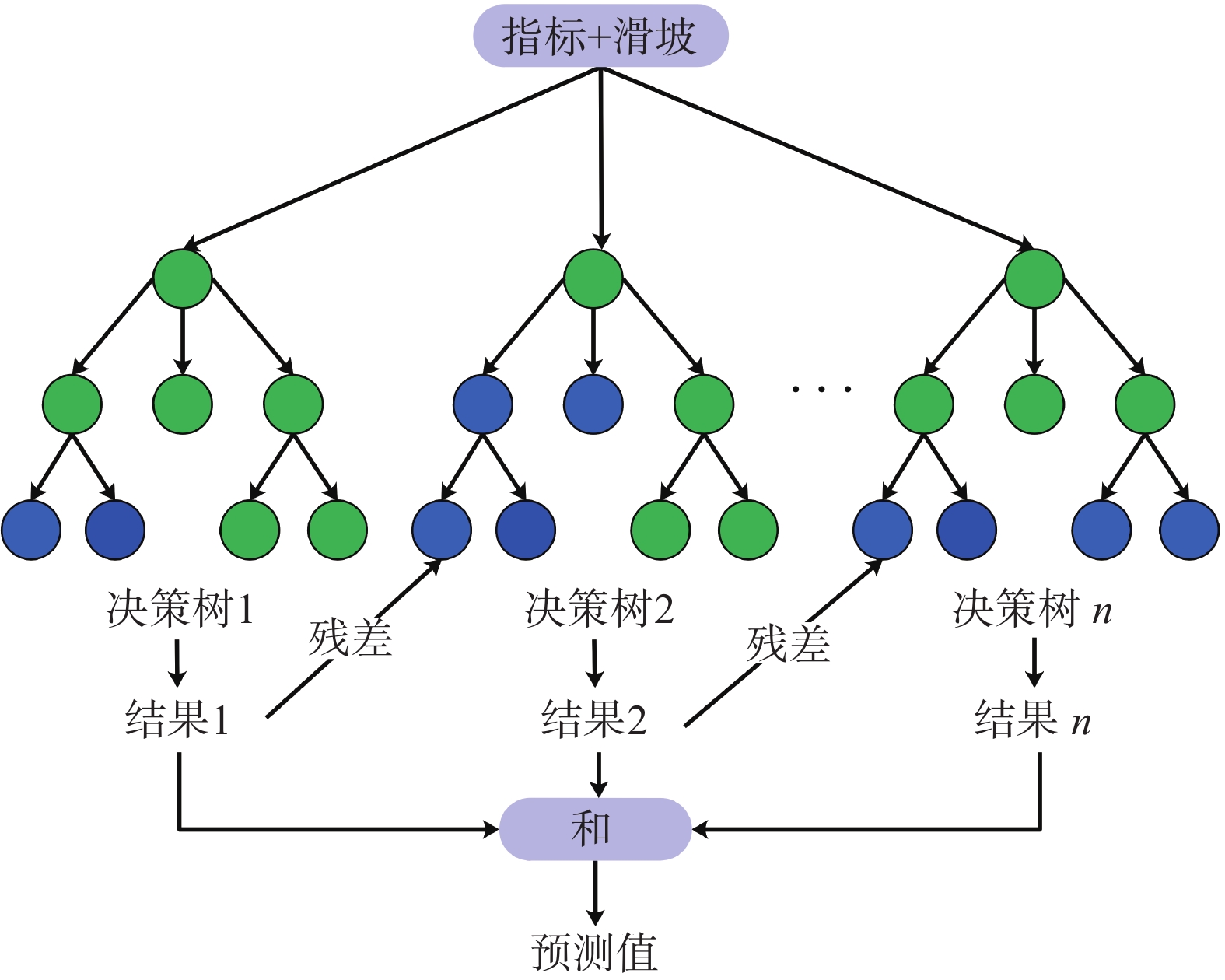
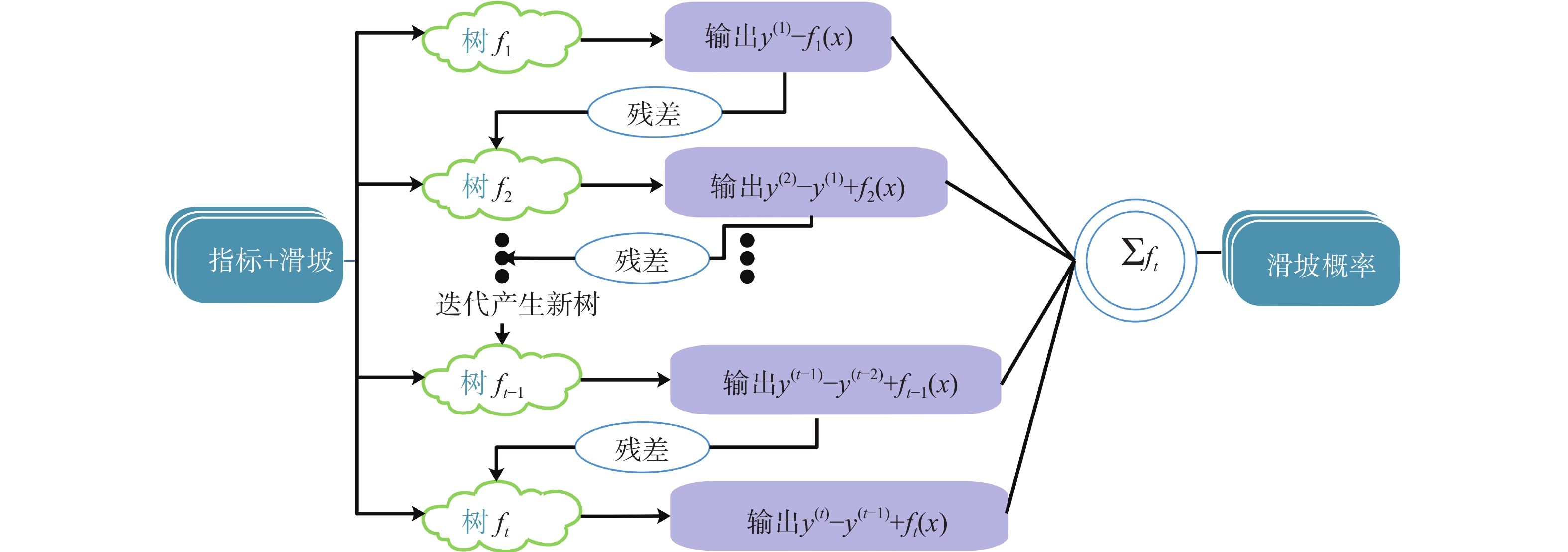


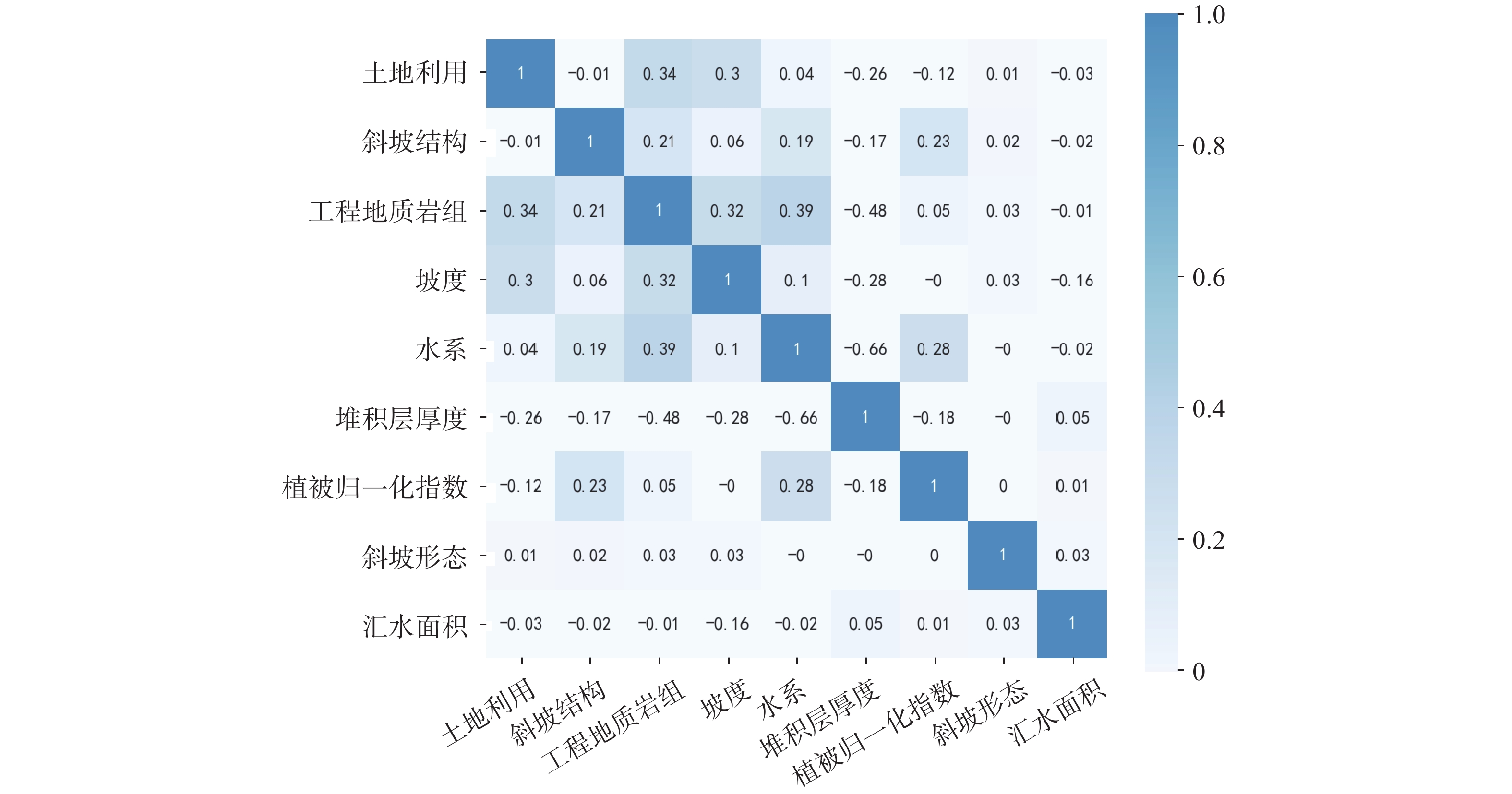



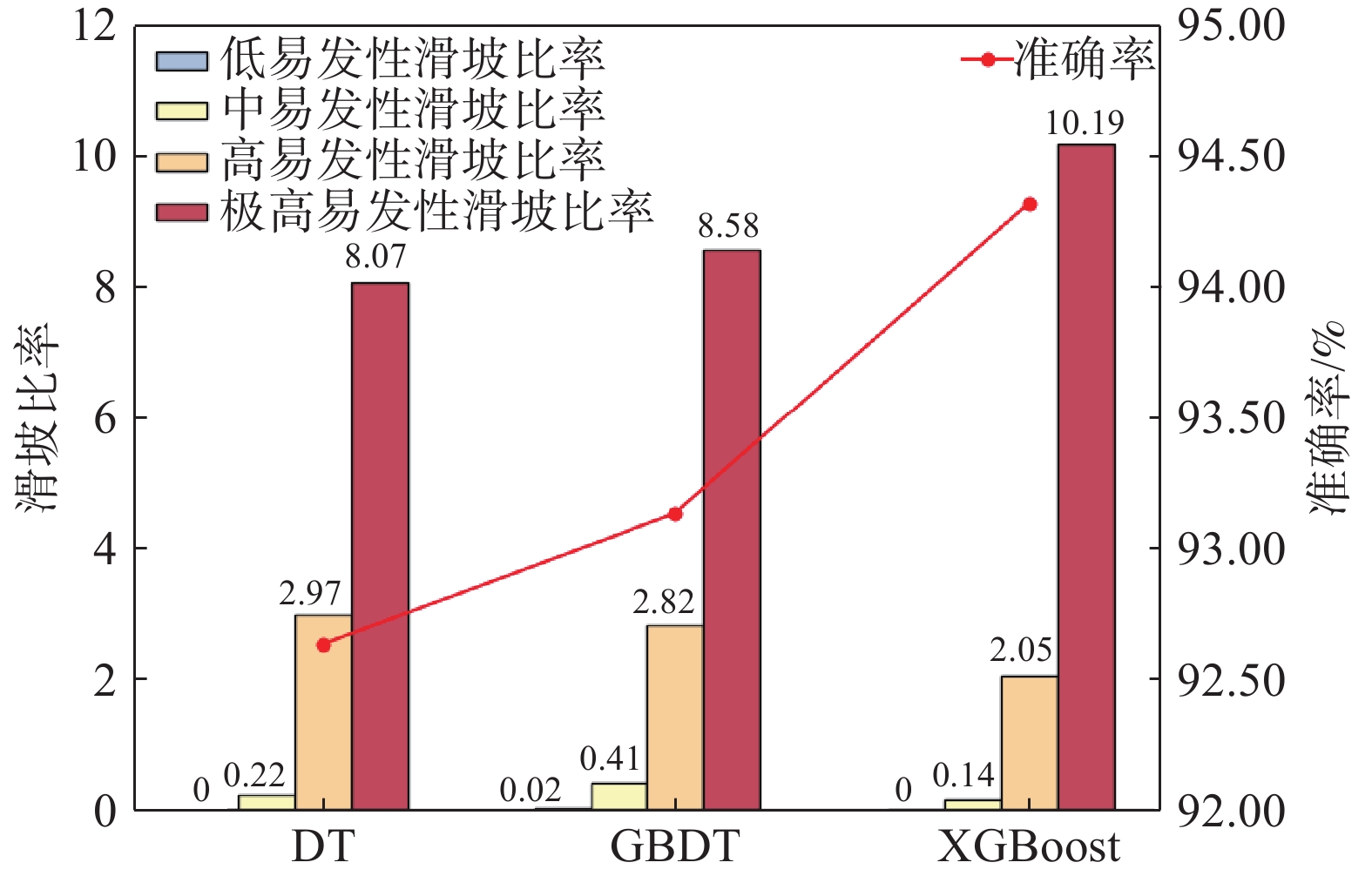
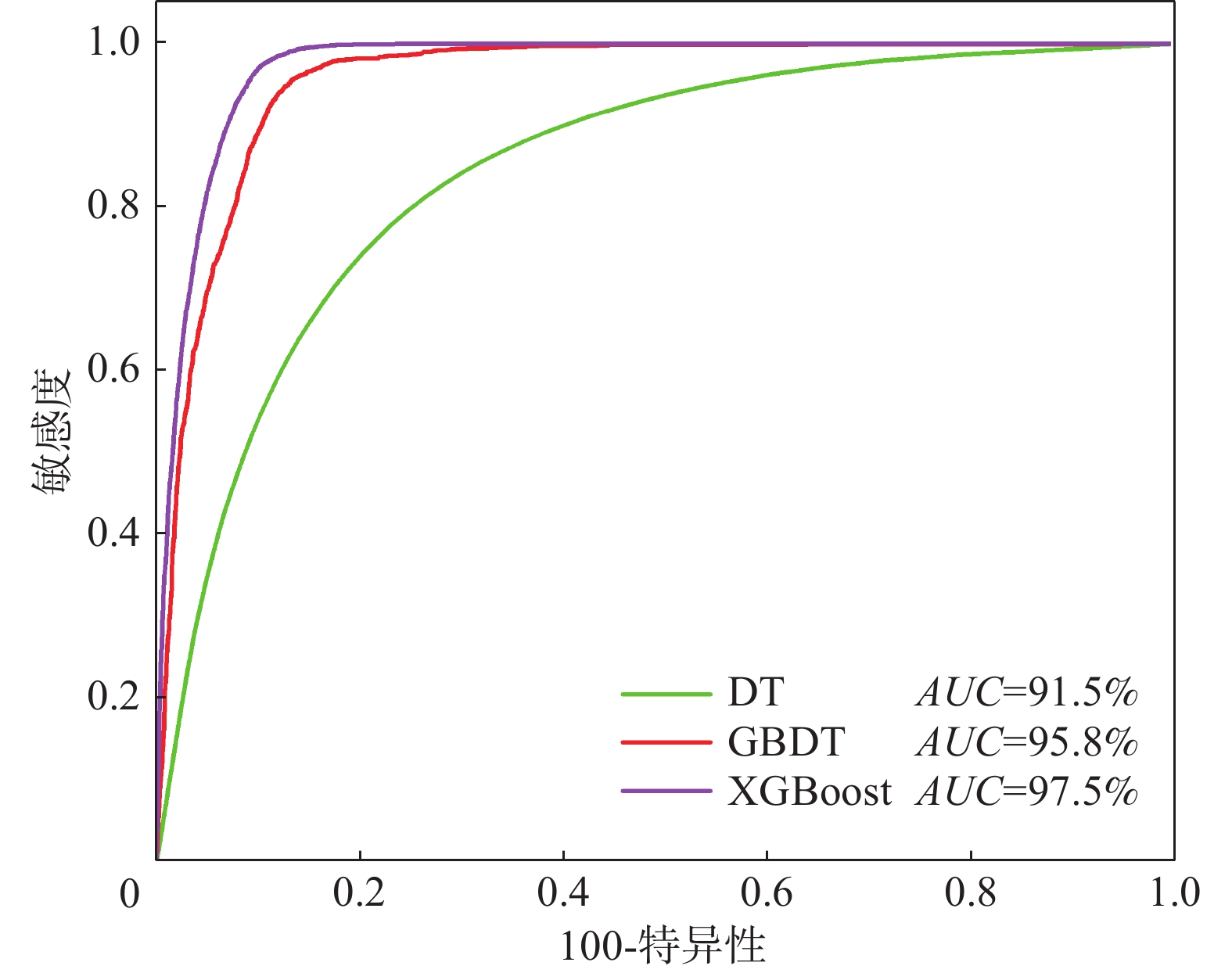
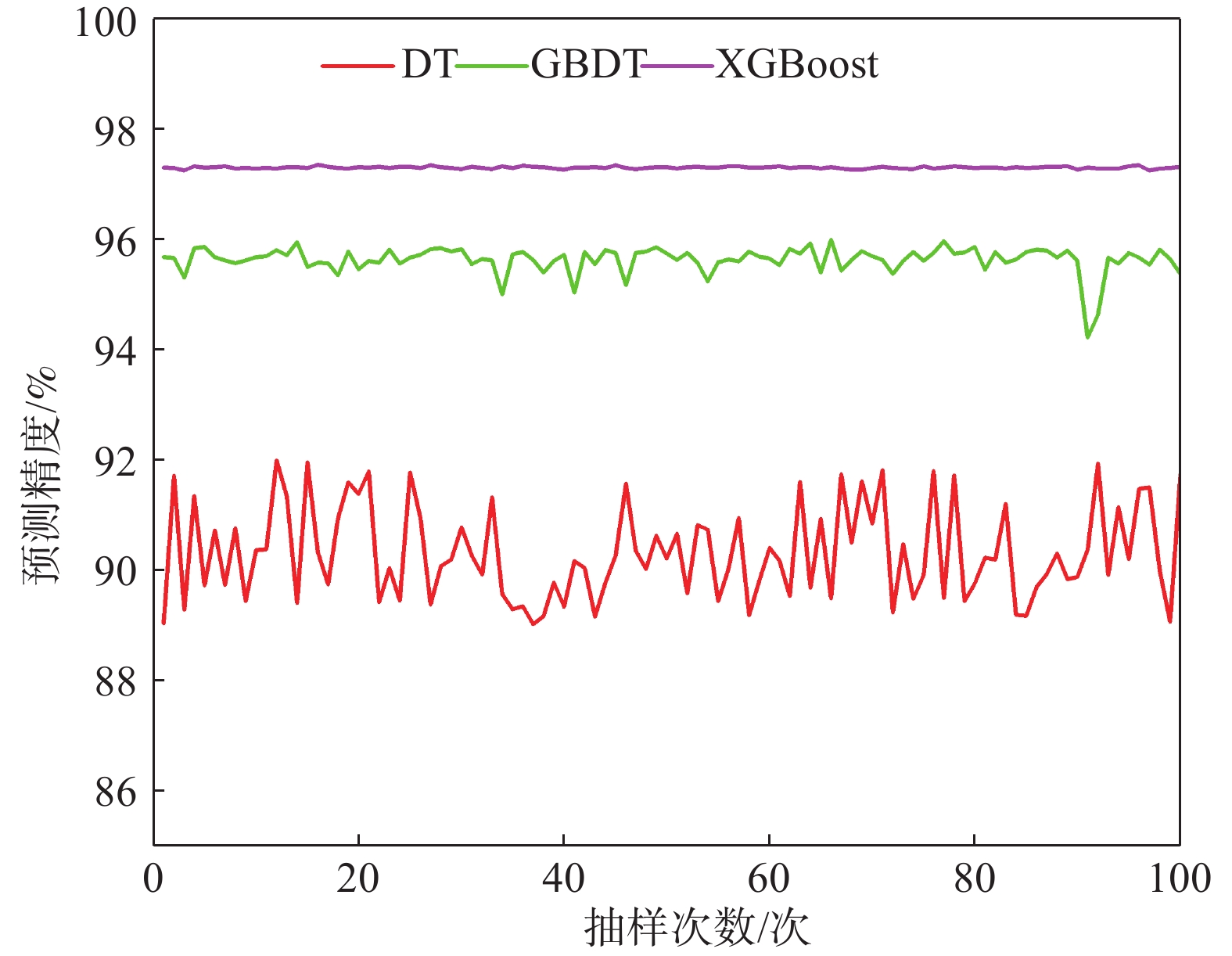
 邮件订阅
邮件订阅 RSS
RSS